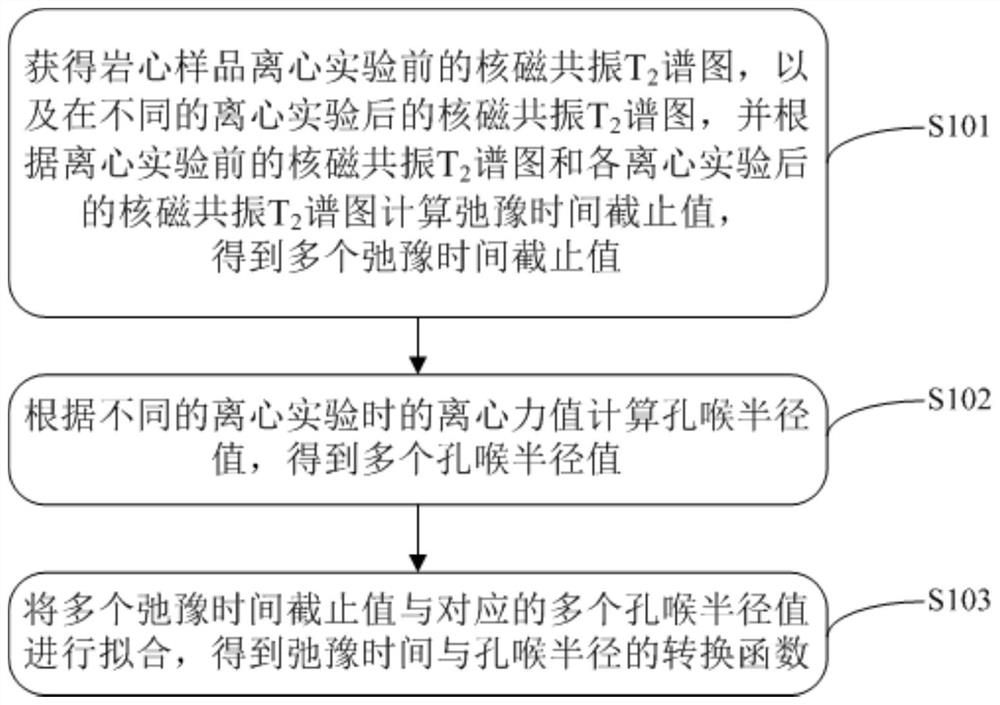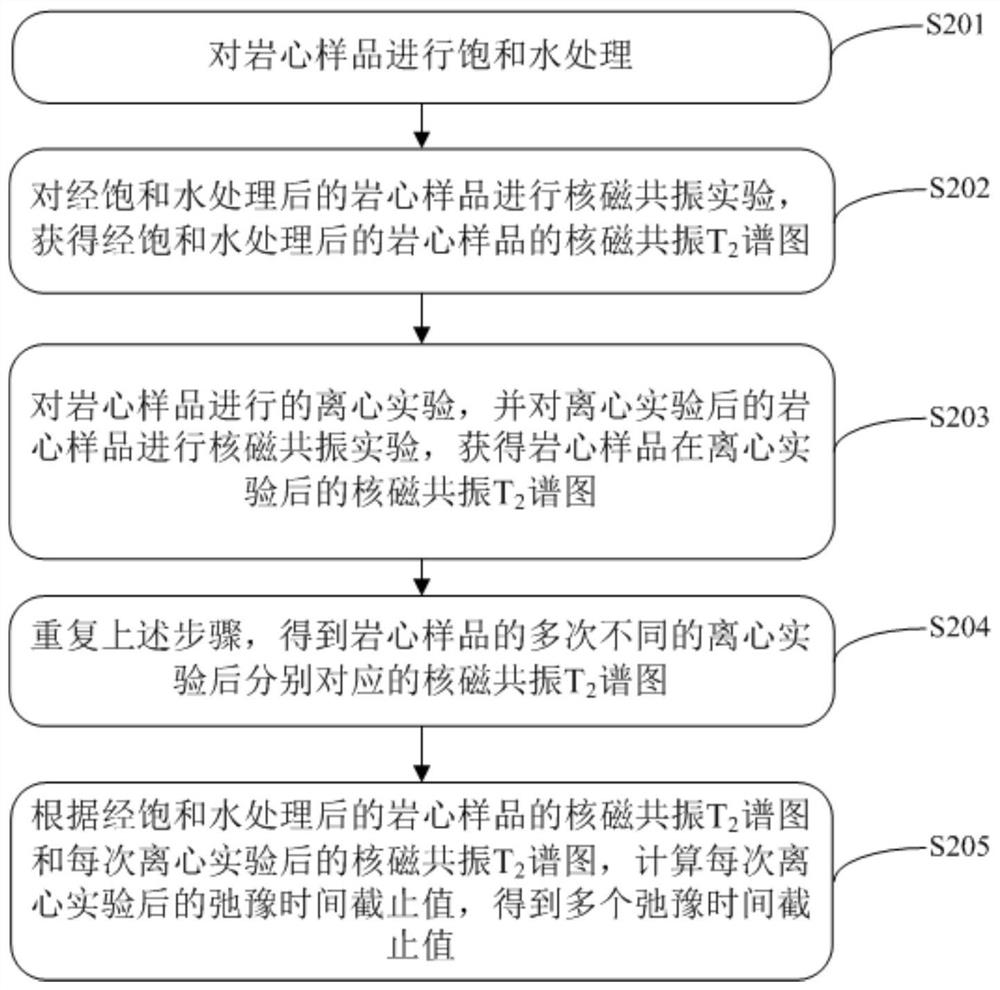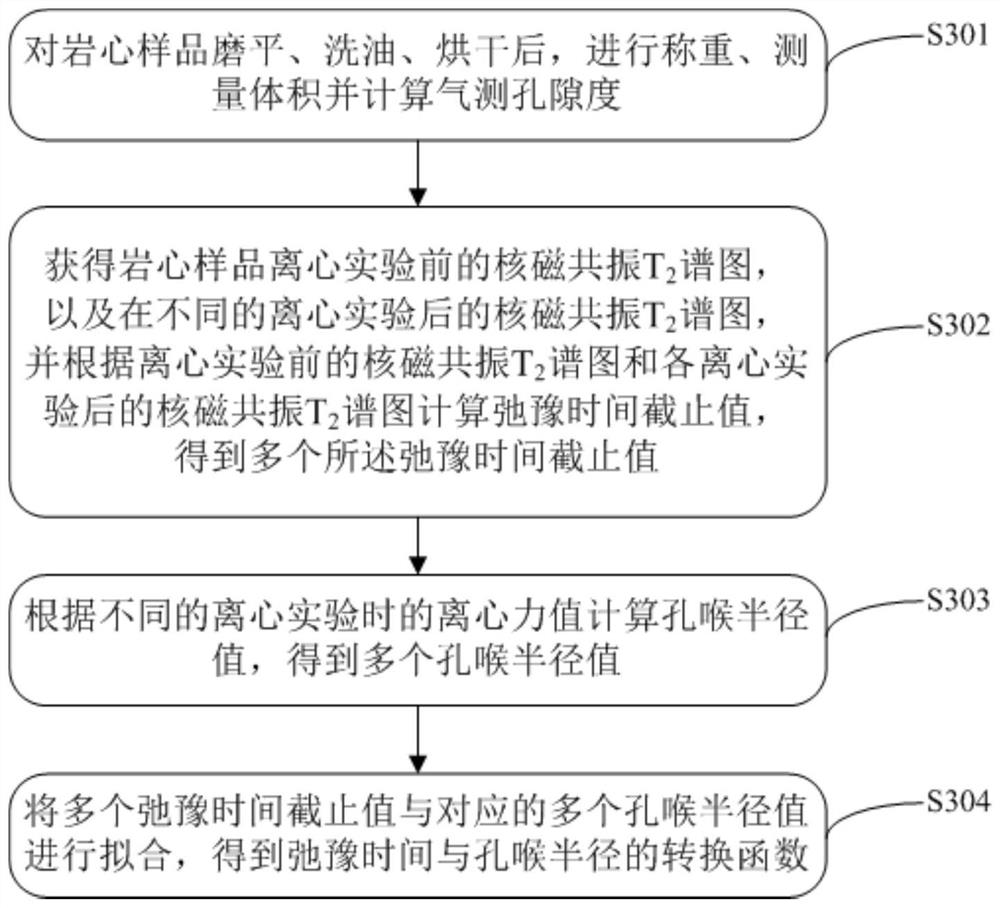Nuclear magnetic resonance relaxation time and pore throat radius conversion method
A nuclear magnetic resonance and relaxation time technology, which is used in analysis by nuclear magnetic resonance, material analysis by resonance, and analysis of suspensions and porous materials. Effects of Conversion Errors
- Summary
- Abstract
- Description
- Claims
- Application Information
AI Technical Summary
Problems solved by technology
Method used
Image
Examples
Embodiment 1
[0041] refer to figure 1 , the conversion method of NMR relaxation time and pore throat radius in the embodiment of the present invention comprises the following steps:
[0042] Step S101, obtaining the nuclear magnetic resonance T before the centrifugation experiment of the core sample 2 Spectra, and NMR T after different centrifugation experiments 2 spectrum, and according to the NMR T before the centrifugation experiment 2 Spectra and NMR T after each centrifugation experiment 2 The spectrum calculates relaxation time cutoffs, resulting in multiple relaxation time cutoffs.
[0043] In the embodiment of the present invention, the core sample is a standard columnar tight sandstone core sample. The size of the core sample is 2.5cm×5cm, that is, the bottom surface diameter of the core sample is 2.5cm, and the height of the core sample is 5cm.
[0044] The temperature during the above centrifugation experiment is 2-6°C. For example, the temperature of the centrifuge can be s...
Embodiment 2
[0066] refer to figure 2 , the conversion method of NMR relaxation time and pore throat radius in the embodiment of the present invention comprises the following steps:
[0067] Step S201, performing saturated water treatment on the core sample.
[0068] In the embodiment of the present invention, the core sample is a standard columnar tight sandstone core sample, the size of the core sample is 2.5cm×5cm, that is, the bottom surface diameter of the core sample is 2.5cm, and the height of the core sample is 5cm.
[0069] The above-mentioned saturated water treatment is carried out pressurization and saturation treatment to the rock core sample, so that water can be filled in the pores of the rock core sample so as to carry out the nuclear magnetic resonance experiment. The pressure during the saturated water treatment in the embodiment of the present invention is 30Mpa, and the saturated water treatment time for 12 hours.
[0070] When the pore volume of the core sample is e...
Embodiment 3
[0101] refer to image 3 , the conversion method of NMR relaxation time and pore throat radius in the embodiment of the present invention comprises the following steps:
[0102] Step S301, after the core sample is smoothed, washed with oil, and dried, it is weighed, its volume is measured, and its gas porosity is calculated.
[0103] In the embodiment of the present invention, the core sample is a standard columnar tight sandstone core sample, the size of the core sample is 2.5cm×5cm, that is, the bottom surface diameter of the core sample is 2.5cm, and the height of the core sample is 5cm. The core sample can be selected by a coring device, and the two ends of the core sample can be ground by a cutting machine for subsequent experiments.
[0104] It should be noted that the core sample needs to be washed with oil, for example, the core sample is washed with benzene-methanol solvent to clean the crude oil and impurities in the pores of the core sample. After the oil-washed c...
PUM
| Property | Measurement | Unit |
|---|---|---|
| radius | aaaaa | aaaaa |
| radius | aaaaa | aaaaa |
| radius | aaaaa | aaaaa |
Abstract
Description
Claims
Application Information
 Login to View More
Login to View More - R&D
- Intellectual Property
- Life Sciences
- Materials
- Tech Scout
- Unparalleled Data Quality
- Higher Quality Content
- 60% Fewer Hallucinations
Browse by: Latest US Patents, China's latest patents, Technical Efficacy Thesaurus, Application Domain, Technology Topic, Popular Technical Reports.
© 2025 PatSnap. All rights reserved.Legal|Privacy policy|Modern Slavery Act Transparency Statement|Sitemap|About US| Contact US: help@patsnap.com



